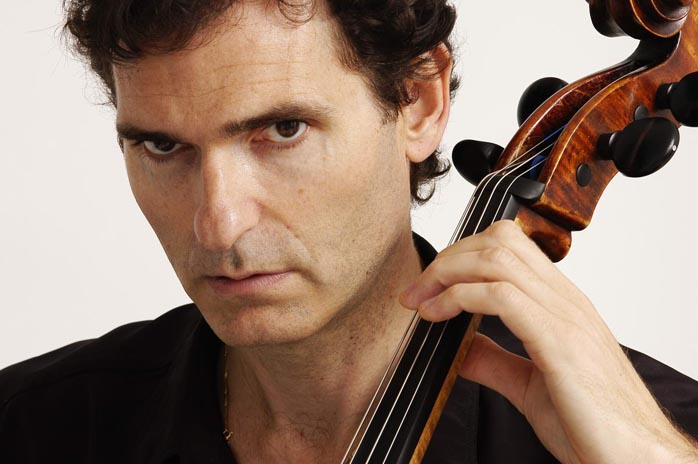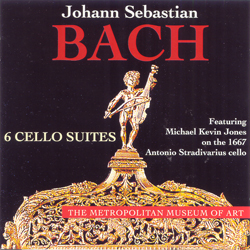 |
||||
 |
||||
|
||||
Despite many alternative choices new and old, this 2002 recording by Michael Kevin Jones stands out and why I couldn’t resist to give it the Blue Moon Award. First, Jones performed on the 1667 Stradivarius from The Metropolitan Museum of Art, New York. This instrument is older than Bach’s composition and indeed does sound like a viola da gamba at times, notably in the two suites written in minor keys, N°.2 and N°.5. Incidentally, with Jones’ nostalgic mood paintings it’s hard not to associate Marais with certain musical phrases. Second, the recording captured a very rich and warm ambience probably with moderately distant miking inside a church with spacious cathedral ceiling. The natural airiness around the instrument synergizes with the organic golden tone of the cello, producing a very analog-sounding hall effect that’s arguably—or absolutely for vinylistas—more intoxicating than modern so-called digital high-resolution recording. Third and to my ears, Jones’ treatment of the dance movements reflects honestly upon the originally intended spirit. His phrasing and rhythm synchronize with the intuitive pulse of a dancer. That doesn’t mean his tempi are faster. In fact, in most cases Yo-Yo Ma and Starker are faster. Yet Jones’ bowing is fluidly choreographic and perpetually progressing with elegant momentum. "Bourée" from the Third Suite, "Courante" and "Bourée" from the Fourth Suite are notable examples that make the work more colorful and dynamic than the 'biblical' interpretations.  [After talking to Jones during the duo’s recent Toronto visit, he confirmed the above two points. The recording venue was the Kirtlington Park House, an 18th century English building imported brick by brick and reconstructed as part of the Metropolitan Museum of Art. For security reason, the Stradivarius was not allowed to be taken outside the museum. The reverberation time in the two-story high building was exceptionally long, posing so much booming problems that the sound engineer took a long time to find a spot for setting the microphone, which was quite far away for solo instrument recording. And, Jones had to play at a relatively slower speed to avoid overlapping notes. But the result is amazing and the sound heavenly.] Fourth, Jones’ articulation is admirable. The long winding melodic lines are rephrased into intricate dialogues as in "Courante" from the Second and Third Suite, "Prelude" from the Third and Sixth Suite and "Gigue" from the Fourth Suite. Most often, too much airiness kills resolution. But Jones apparently worked closely with the recording engineer to strike a balance with his utterly clean and precise bowing and well-controlled vibrato. When appropriate as in the "Allemande" from the Third Suite, Jones let loose and quietly rubbed in a hint of modernism or a touch of humoresque as in the "Gavotte" from the Sixth Suite. Humor for Bach? Why not? Don’t forget that Bach was human too. The Six Cello Suites BWV1007-1012 in fact shared some creative elements with The Six Sonatas and Partitas for Violin Solo BWV1001-1006 which Bach previously finished. I always like to joke that Bach probably got tired of the task and decided to take the easy way out when he got to the last "Gavotte" in BWV1012. He simply recycled the one from BWV1006! And if you listen to the "Prelude" in BWV1010 carefully, it’s not hard to tell where the piece originated. It’s not just Rossini who recycled his tunes. |
||||
 |


